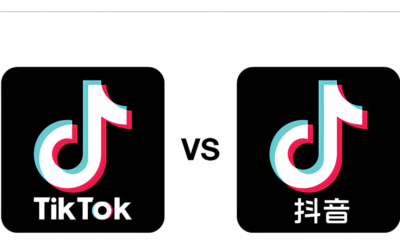Warfare has evolved beyond traditional kinetic battlefields into the realm of the mind. The traditional armed conflict now shares the stage with a cognitive front, where perception and persuasion matter as much as artillery. In the modern era, power is projected not only through missiles and troops but also through information warfare (IW), a battleground fought online through media and opinion shaping.

Image Credit: Caniphish
What Is Information Warfare?
Information warfare refers to state or non-state actions designed to influence, manipulate, or disrupt decision-making processes at all levels, including those of governments, institutions, and the public. The heart of IW lies in spreading disinformation, propaganda, fake media, and psychological operations (PsyOps) aimed at undermining trust, sowing confusion, and achieving political goals. Russia’s disinformation blitz around its invasion of Ukraine and cyber‑espionage campaigns like Operation Armageddon are textbook examples of how IW operates on a global scale.
You May Like To Read: Pakistan’s Crackdown on Digital Terror
Hybrid Warfare
Hybrid warfare is the integrated use of kinetic military force, irregular proxies, cyber operations, diplomatic pressure, and information manipulation. Coined by strategist Frank Hoffman in 2007, it emphasises flexibility and deniability. Hybrid frameworks mix traditional and non‑traditional tactics, cyberattacks, fake news, and regime change operations, all designed to operate below the threshold of open war. Hezbollah’s 2006 campaign in Lebanon is a classic early model: using guerrilla tactics and media campaigns to project a narrative of Israeli defeat even when battlefield realities differed.

Image Credit: Air Force Intel | Memes
Components of Modern IW
Cyber Warfare: Attacks on infrastructure, government networks, or communication systems aimed at disruption or espionage. Russian cyber operations against Ukraine and even NATO infrastructure illustrate how cyber tools support broader psychological goals.
Media Manipulation: Coordinated troll armies, bot amplification, fake media outlets, and influencer networks shape narratives. CSOH documented how India used verified influencers openly declaring disinformation as “electronic warfare” during the Sindoor crisis in May 2025.
Psychological Operations (PsyOps): Targeted messaging intended to influence emotions, beliefs, and behaviour—often to break morale or provoke doubt. These techniques operate by exploiting cognitive biases, fear, and identity triggers. Modern PsyOps are not only about what you think, but also how you think.
Cognitive Warfare: An advanced form of Information Warfare, cognitive warfare disrupts sense-making itself by utilising AI media, deepfakes, manipulated audio, or video to alter how people interpret events. NATO military thinkers say its goal is to reshape reasoning and decision-making processes.
Why It Matters for Pakistan?
As a nation at the centre of regional rivalries, Pakistan faces aggressive digital campaigns from India and Israel. Indian platforms used doctored footage, recycled videos from Gaza and Ukraine, and AI deepfakes to falsely claim Pakistani military defeats during Operation Sindoor in May 2025. These narratives went viral within hours, only to be debunked later.
In response, Islamabad-based networks circulated manipulated visuals implying Indian strikes on Karachi port and other falsehoods, often amplified within Pakistani state media, echoing military narratives. Such campaigns aim to garner global sympathy for Pakistan, shift blame, or create a strategic distraction.
You May Like To Read: Framing Under Question: Gaza, BBC, and Al Jazeera
The consequences are severe: misinformation can inflame tensions, destabilise communities, provoke retaliatory responses, or even bring nuclear powers to the brink of war. The narrative war may force policymakers to react to false crises, jeopardising peace and affecting public morale.
Case Studies: IW Around the World
From the 2014 annexation of Crimea onward, Russia deployed hybrid and information warfare tactics. Cyberattacks, troll farms, fake news, and deepfake videos were central to undermining Ukrainian sovereignty. A deepfake video of President Zelensky calling on Ukrainians to surrender was widely circulated before being debunked. OSINT tracking revealed that bots amplified pro-Russian messages to millions globally, including in countries such as Pakistan and India.
Russia’s interference in U.S. elections in 2016—and reports suggesting activity in 2024—are hallmark examples of information warfare. Troll farms, state-backed media, and Cambridge Analytica-style targeting sought to polarise opinions and influence democratic outcomes.
Beijing utilises digital networks and state-run media to shape perceptions, not only domestically but also across Asia. Operations aimed at Taiwan or Hong Kong exemplify hybrid tactics, including cyber intrusion, propaganda, covert lawfare, and the suppression of dissent through online platforms—all part of the cognitive warfare infrastructure.
Public Awareness: Pakistan’s Defence in Depth
Islamabad University and provincial bodies organised seminars, emphasising that “modern warfare is driven by misinformation and fear, not bullets” and underscoring the importance of media awareness for civilian resilience. UNESCO-led national workshops are underway to develop a Media and Information Literacy framework, aiming to foster critical digital skills among young people and policymakers.
The federal government has also empowered PKCERT (Pakistan Computer Emergency Response Team), established in March 2024, to coordinate national-level cyber defence and incident response. In today’s interconnected world, warfare no longer begins and ends on battlefields. Public opinion, manipulated images, bot‑driven viral content, and AI deepfakes form the invisible front lines. For Pakistan, defending national integrity and regional stability means mastering this digital battlefield as forcefully as any military domain.







